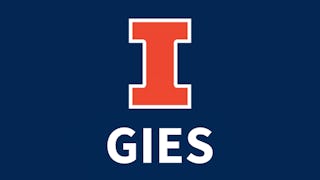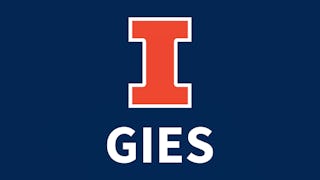3D printing with metals is revolutionizing manufacturing, engineering, and artistry. In “Introduction to 3D Printing with Metals,” you’ll learn about the essential elements of the technology, and how it can be applied to a range of use cases.


您将学到什么
Recognize the importance and applications of 3D printing with metals in engineering, industrial contexts, and art and design
Articulate how 3D printing with metals differs from 3D printing with plastics
Explain five different families of processes used to 3D print with metals
Determine which 3D printing method is suited for your project
您将获得的技能
要了解的详细信息

添加到您的领英档案
12 项作业
了解顶级公司的员工如何掌握热门技能

该课程共有5个模块
Welcome to the Introduction to 3D Printing with Metals course! Why does one need to 3D print with metals? When is it better to 3D print with metals as opposed to plastic? How is it different? This module will allow you to answer these important questions by reviewing the fundamentals of 3D printing with plastics and introducing the process of 3D printing with metals. Let's start printing!
涵盖的内容
9个视频6篇阅读材料3个作业1个应用程序项目3个讨论话题
Welcome to Module 2! Imagine this: Instead of welding metallic parts together, what if we let the weld be part itself? How to do that? Our imagination can become a reality. Directed Energy Deposition (DED) with metals is a family of processes that allow one to “draw” a part in 3D space by welding together material nonstop until the part is finished. In principle, this would be human-operable, but robotic welders do it because it requires long periods of nonstop operation. This module reviews three types of DED processes, which differ in the size and precision of the machinery used, in the form of the metal stock being welded, and in how the weld is performed. Let's start printing!
涵盖的内容
14个视频5篇阅读材料3个作业1个应用程序项目2个讨论话题
Welcome to Module 3! There are many applications for 3D printing with metals that demand extreme precision, far more so than the extrusion-based and welding-based processes—we have learned about so far—can satisfy. A class of processes called Powder Bed Fusion (PBF) addresses this concern by fusing metal powder particles with a far smaller and more concentrated heat source than Directed Energy Deposition (DED), with the powder particles laying stationary as a flat surface to further remove process variability. In this module, we will learn about two types of PBF processes, which differ in the technology used for the heat source. Let's start printing!
涵盖的内容
8个视频4篇阅读材料2个作业1个应用程序项目2个讨论话题
Welcome to Module 4! In Module 3, we discussed the powder bed fusion processes and how they produce parts with extreme geometric complexity. However, they are very slow processes. So, what could be done to improve the process speed? A class of methods known as jetting-based processes addresses these concerns by joining powder particles together at room temperature using a glue-like binder and then fusing the joined particles together into a solid part as a post-processing step. This can be done much faster than a continuous application of heat. In this module, we review two types of jetting-based processes, which differ in how the powder particles are joined together during the layer-wise printing process. Let's start printing!
涵盖的内容
9个视频4篇阅读材料2个作业1个应用程序项目2个讨论话题
Welcome to Module 5, the last Module of the Course! We know already that many applications for 3D printing with metals demand extremely strict quality control. The various fusing methods discussed earlier in the course struggle to meet these demands. Lamination-based processes address this limitation by joining together layers of metal sheets via low-intensity methods that almost exactly reproduce the properties of traditionally wrought material without needing extra post-processing work. In this module, we review two types of jetting-based processes, which differ in the technology used to fuse the metal sheets together. Let's finalize printing!
涵盖的内容
9个视频6篇阅读材料2个作业1个应用程序项目2个讨论话题
位教师

从 Mechanical Engineering 浏览更多内容
 状态:免费试用
状态:免费试用University of Illinois Urbana-Champaign
 状态:免费试用
状态:免费试用University of Illinois Urbana-Champaign
 状态:免费试用
状态:免费试用University of Illinois Urbana-Champaign
 状态:免费试用
状态:免费试用University of Illinois Urbana-Champaign
人们为什么选择 Coursera 来帮助自己实现职业发展




学生评论
18 条评论
- 5 stars
78.94%
- 4 stars
21.05%
- 3 stars
0%
- 2 stars
0%
- 1 star
0%
显示 3/18 个
已于 Apr 1, 2025审阅
Great survey course to feel more confident in investigating projects with additive manufacturing.
常见问题
To access the course materials, assignments and to earn a Certificate, you will need to purchase the Certificate experience when you enroll in a course. You can try a Free Trial instead, or apply for Financial Aid. The course may offer 'Full Course, No Certificate' instead. This option lets you see all course materials, submit required assessments, and get a final grade. This also means that you will not be able to purchase a Certificate experience.
When you purchase a Certificate you get access to all course materials, including graded assignments. Upon completing the course, your electronic Certificate will be added to your Accomplishments page - from there, you can print your Certificate or add it to your LinkedIn profile.
Yes. In select learning programs, you can apply for financial aid or a scholarship if you can’t afford the enrollment fee. If fin aid or scholarship is available for your learning program selection, you’ll find a link to apply on the description page.
更多问题
提供助学金,

 中
中

